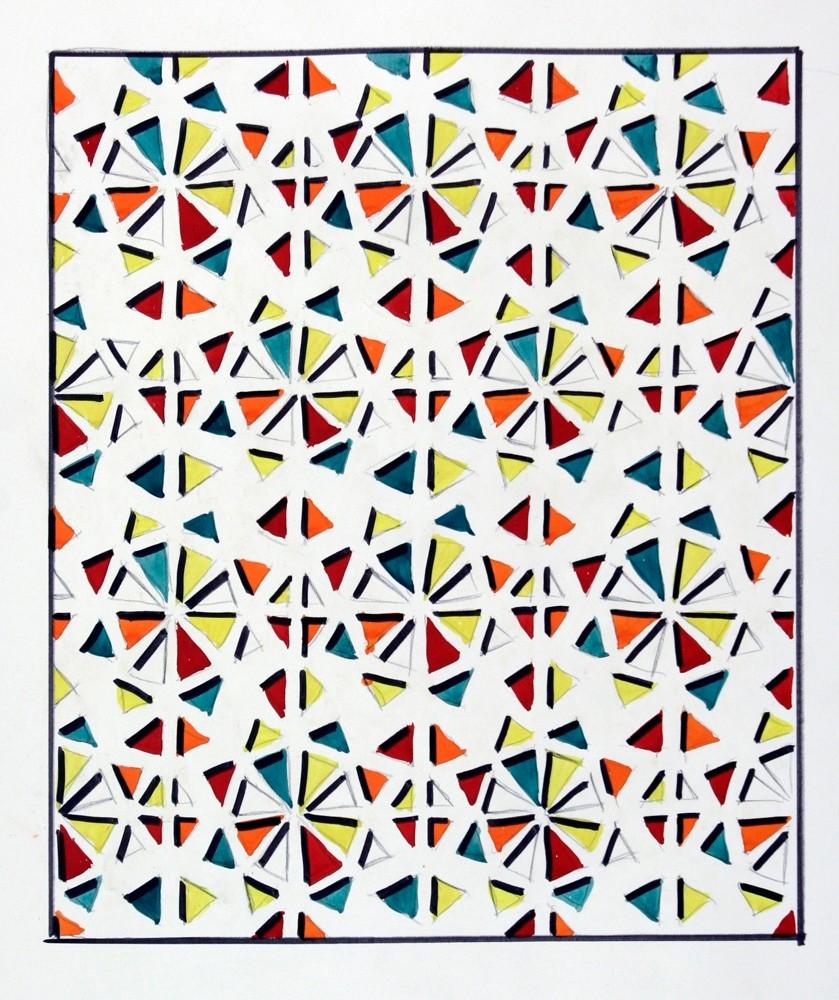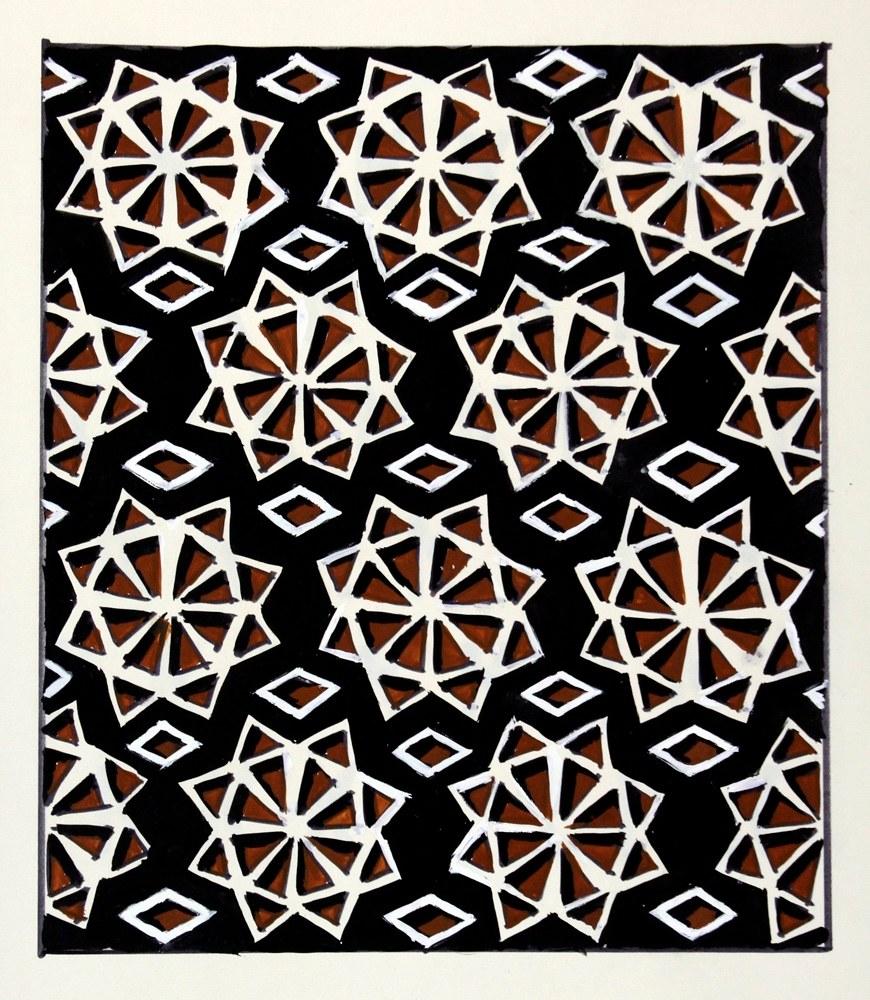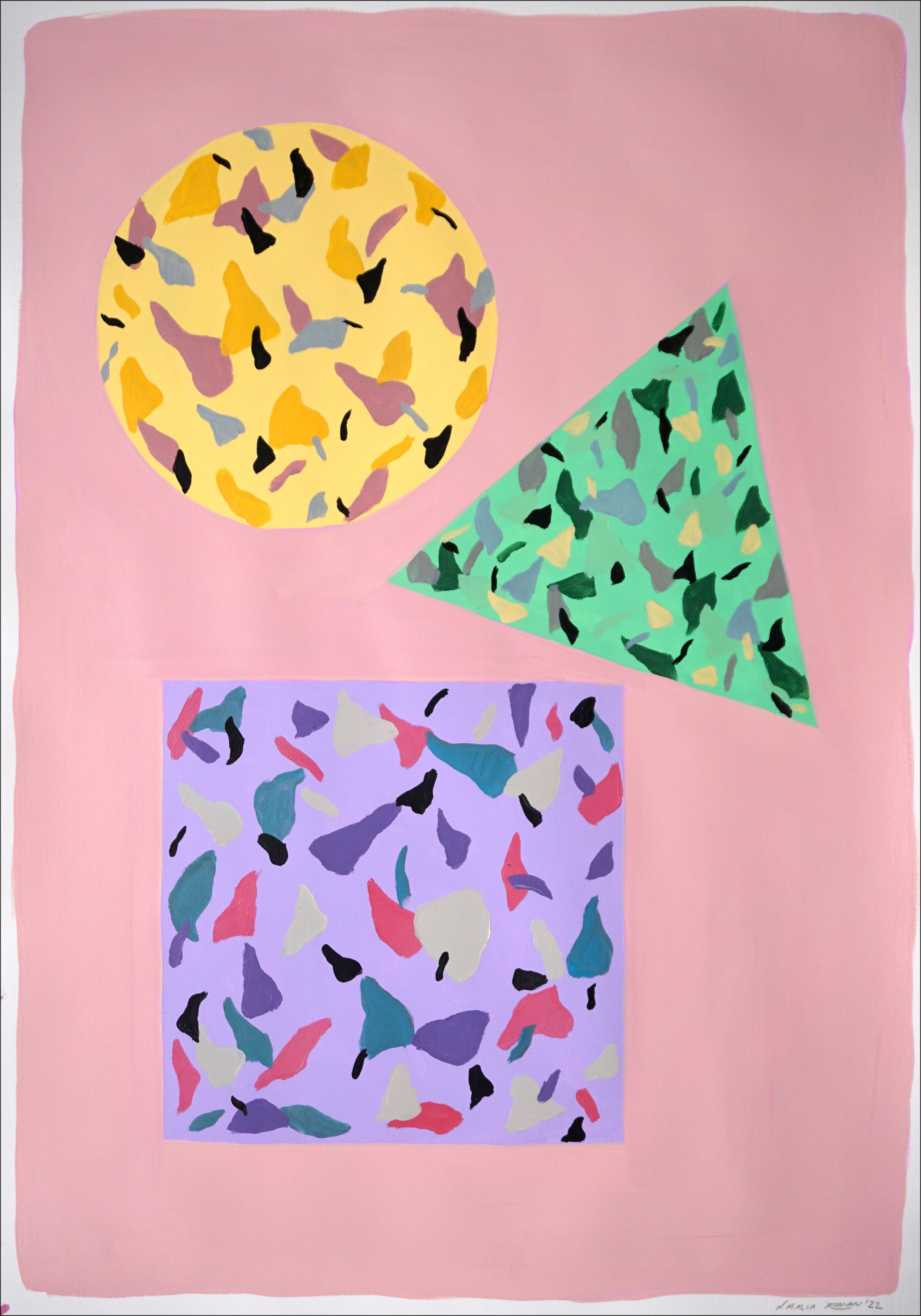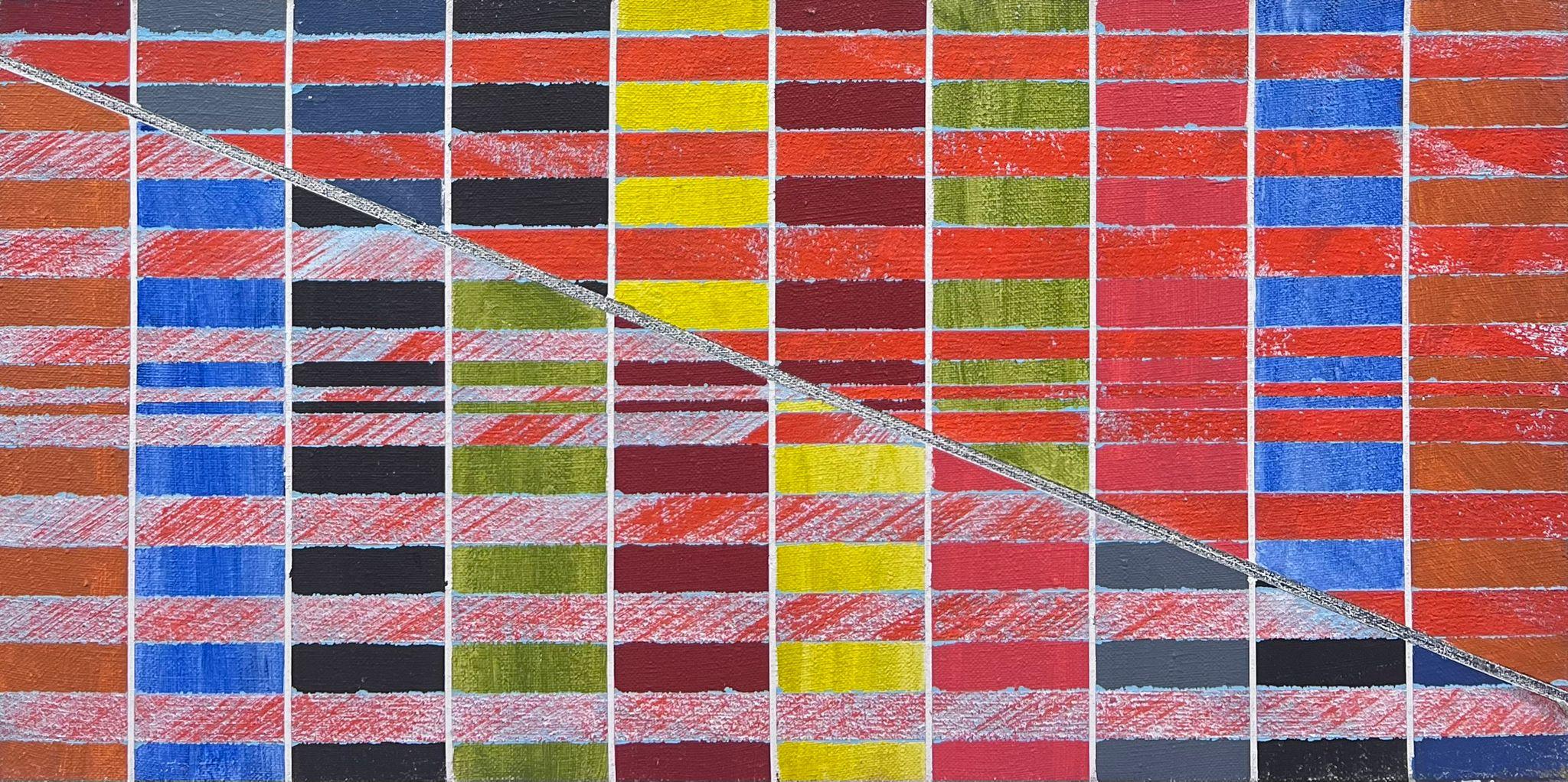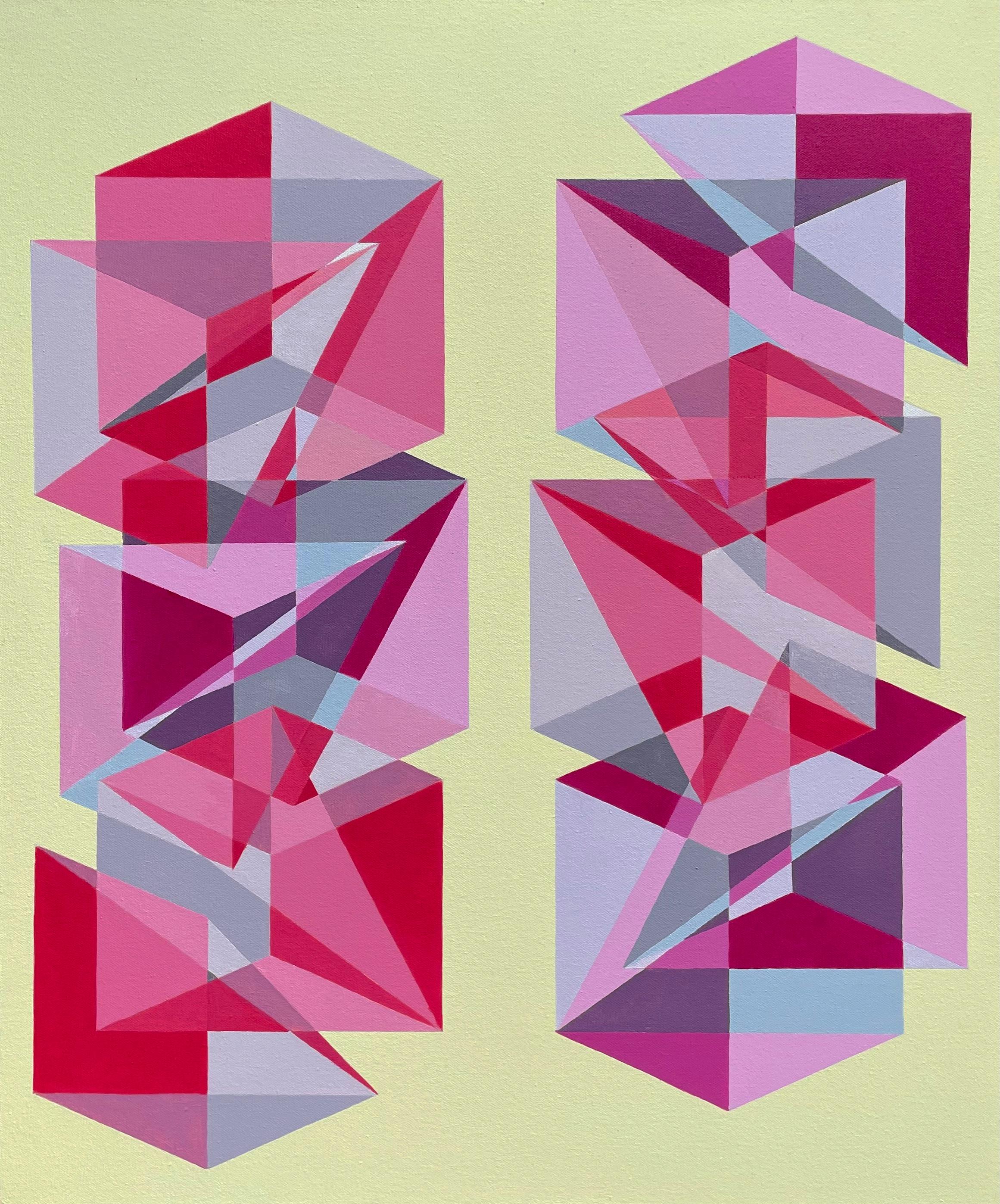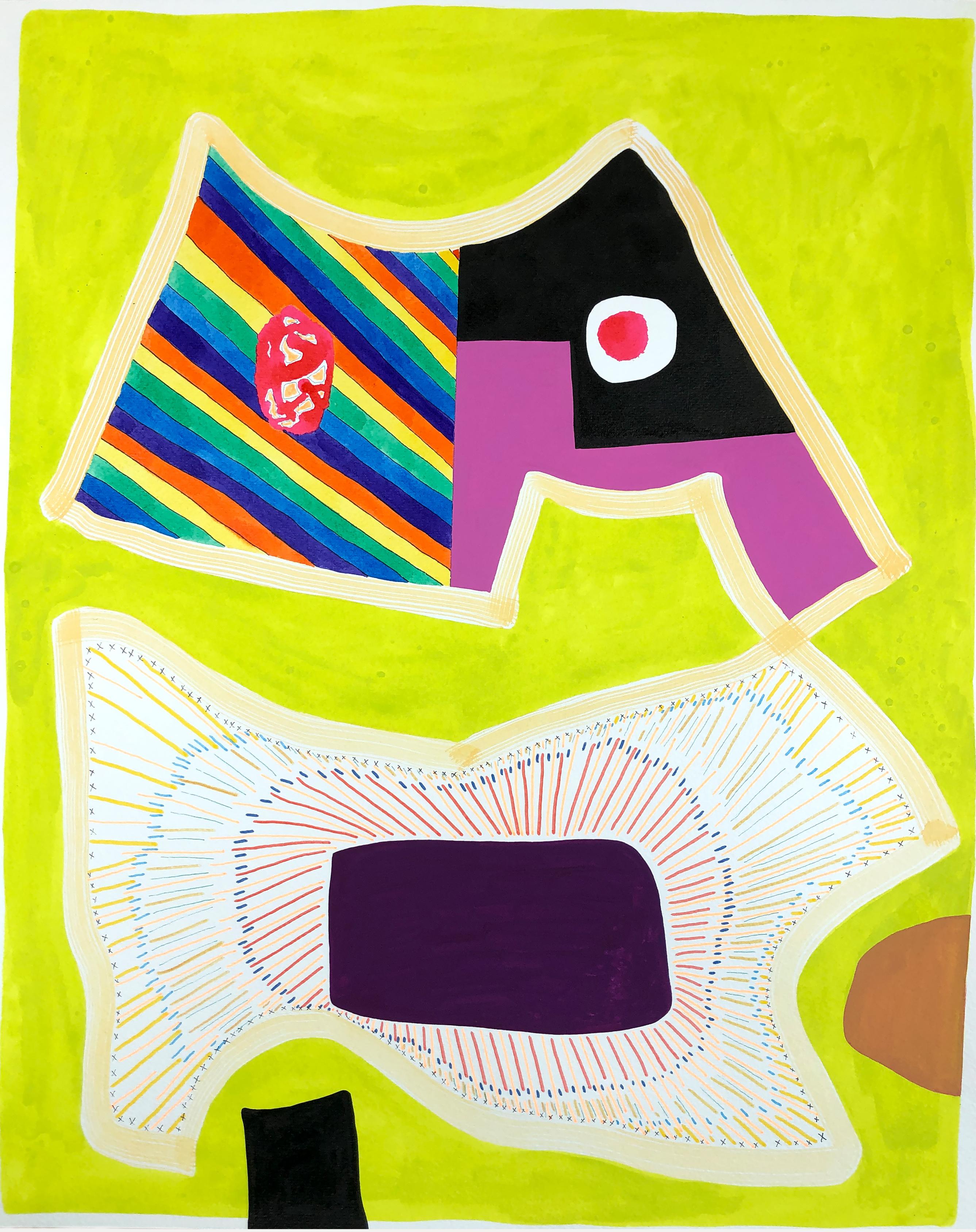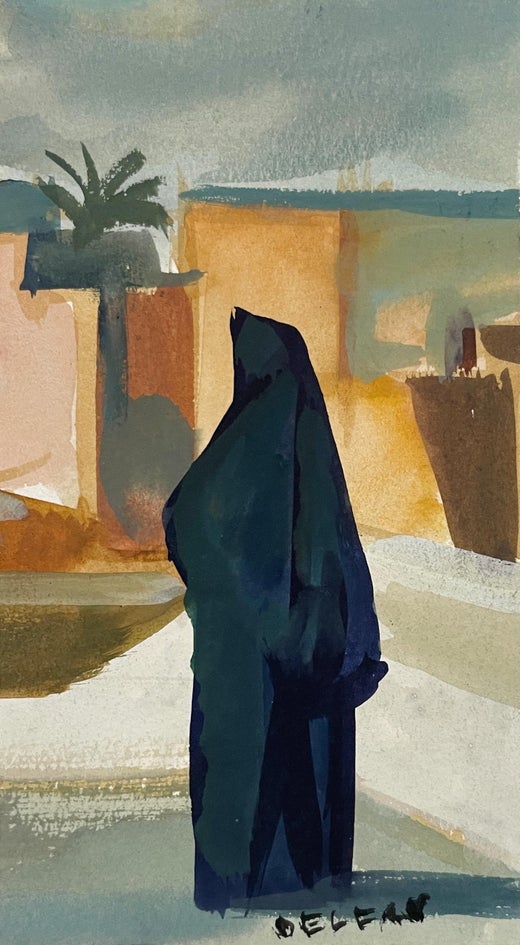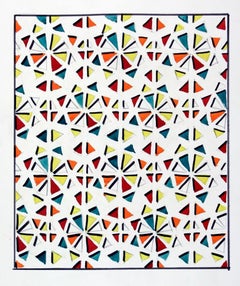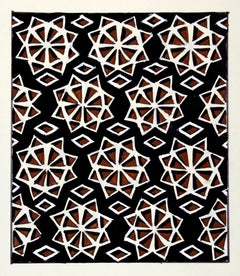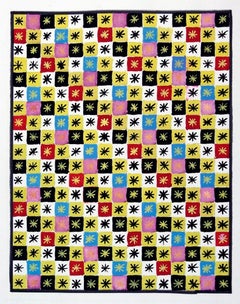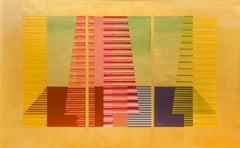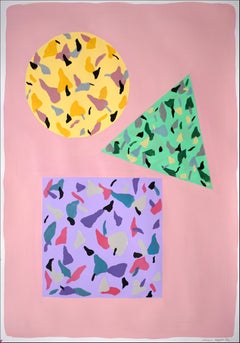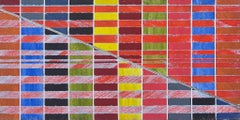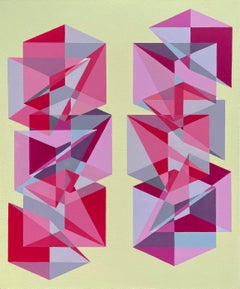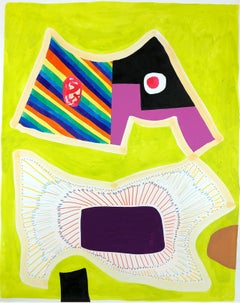Items Similar to 1950s Geometric Pink and Yellow Textile Design by Artist Andre Delfau
Want more images or videos?
Request additional images or videos from the seller
1 of 7
Andre Delfau1950s Geometric Pink and Yellow Textile Design by Artist Andre Delfauca. 1950s
ca. 1950s
$385
$85054% Off
£296.17
£653.8854% Off
€343.77
€758.9654% Off
CA$542.94
CA$1,198.7054% Off
A$608.19
A$1,342.7554% Off
CHF 319.44
CHF 705.2654% Off
MX$7,395.35
MX$16,327.4054% Off
NOK 4,045.17
NOK 8,930.9054% Off
SEK 3,839.96
SEK 8,477.8254% Off
DKK 2,565.66
DKK 5,664.4554% Off
About the Item
A 1950s geometric textile design in brown, yellow and pink tones by notable stage and set designer Andre Delfau.
Born in Paris, France in 1914, Andre Delfau became an internationally acclaimed stage, set and costume designer who worked world-wide from the 1930s to the 1980s. Delfau was a life long artist and painted independently of his noted design career. His artwork is recognized for it’s vibrant color and form, and a particularly keen use of line. He was highly influenced by the French Modern trends of Cubism and Surrealism, and his artwork is often infused with a dramatic sense of architecture and perspective.
Delfau created fashion designs for such major Paris couture houses as Balmain, Jean Patou and Balenciaga. He completed noteworthy set designs and costumes for numerous international operatic and ballet productions, including those at the Royal Danish Ballet, the Royal Ballet of Great Britain, the Paris Opera, the Dance Theater of Harlem, the Ruth Page International Ballet, the Civic Ballet of Chicago, the Chicago Opera Ballet and the Lyric Opera of Chicago, among others. Most notably, Delfau designed the elaborate stage sets and costumes for the 1986 PBS television production of the Viennese operetta, "Die Fledermaus".
Delfau lived primarily in Paris and Chicago. He frequently traveled to Morocco. One of his favorite subjects to paint was the historic Jemaa el-Fna market in Marrakesh. Late in life, he married Chicago ballet impresario Ruth Page. Delfau died in Chicago in 2000. at the age of 86.
- Creator:Andre Delfau (1914 - 2000, French)
- Creation Year:ca. 1950s
- Dimensions:Height: 19 in (48.26 cm)Width: 14.5 in (36.83 cm)
- More Editions & Sizes:Provenance: Estate of the artistPrice: $485
- Medium:
- Movement & Style:
- Period:
- Condition:See Photos.
- Gallery Location:Chicago, IL
- Reference Number:Seller: #56011stDibs: LU2591212666312
Andre Delfau
Born in Paris, France in 1914, Andre Delfau was an acclaimed stage, set, and costume designer. His career spanned from the 1930s to the 1980s, with international recognition. In addition to his design work, Delfau pursued his passion for painting, known for its vibrant colors, keen use of line, and influences from Cubism and Surrealism. He collaborated with renowned fashion houses such as Balmain, Jean Patou, and Balenciaga, while creating sets and costumes for prominent opera and ballet productions worldwide. Notably, he designed the elaborate stage sets and costumes for the 1986 PBS television production of "Die Fledermaus." Delfau resided in Paris and Chicago, frequently drawing inspiration from his travels to Morocco, particularly the Jemaa el-Fna market in Marrakesh. In his later years, he married Chicago ballet impresario Ruth Page. Andre Delfau passed away in Chicago in 2000 at the age of 86.
About the Seller
5.0
Recognized Seller
These prestigious sellers are industry leaders and represent the highest echelon for item quality and design.
Established in 2000
1stDibs seller since 2023
71 sales on 1stDibs
Typical response time: 3 hours
- ShippingRetrieving quote...Shipping from: Chicago, IL
- Return Policy
Authenticity Guarantee
In the unlikely event there’s an issue with an item’s authenticity, contact us within 1 year for a full refund. DetailsMoney-Back Guarantee
If your item is not as described, is damaged in transit, or does not arrive, contact us within 7 days for a full refund. Details24-Hour Cancellation
You have a 24-hour grace period in which to reconsider your purchase, with no questions asked.Vetted Professional Sellers
Our world-class sellers must adhere to strict standards for service and quality, maintaining the integrity of our listings.Price-Match Guarantee
If you find that a seller listed the same item for a lower price elsewhere, we’ll match it.Trusted Global Delivery
Our best-in-class carrier network provides specialized shipping options worldwide, including custom delivery.More From This Seller
View AllA Cheerful 1950s Textile Design by Artist Andre Delfau
By Andre Delfau
Located in Chicago, IL
A colorful textile design in orange, blue, red and yellow tones depicting an abstract polychrome Wedge Star pattern by set and costume designer Andre ...
Category
1950s American Modern Abstract Drawings and Watercolors
Materials
Ink, Gouache, Graphite, Paper
$385 Sale Price
54% Off
A Captivating 1950s Textile Design by Artist Andre Delfau
By Andre Delfau
Located in Chicago, IL
A captivating 1950s textile design in black and brown ochre tones with wedge star pattern by noted set and costume designer Andre Delfau.
Born in Par...
Category
1950s American Modern Abstract Drawings and Watercolors
Materials
Ink, Gouache, Graphite, Paper
Brightly Colored 1950s Textile Design by Artist Andre Delfau
By Andre Delfau
Located in Chicago, IL
A colorful 1950s textile design (Black, yellow, blue, pink, red tones) by noted set and costume designer Andre Delfau.
Born in Paris, France in 1914, Andre Delfau became an internationally acclaimed stage, set and costume designer who worked world-wide from the 1930s to the 1980s. Delfau was a life long artist and painted independently of his noted design career. His artwork is recognized for it’s vibrant color and form, and a particularly keen use of line. He was highly influenced by the French Modern trends of Cubism and Surrealism, and his artwork is often infused with a dramatic sense of architecture and perspective.
Delfau created fashion designs for such major Paris couture houses as Balmain, Jean Patou and Balenciaga. He completed noteworthy set designs and costumes for numerous international operatic and ballet productions, including those at the Royal Danish Ballet, the Royal Ballet of Great Britain, the Paris Opera, the Dance Theater of Harlem, the Ruth Page International Ballet, the Civic Ballet of Chicago, the Chicago Opera Ballet and the Lyric Opera of Chicago, among others. Most notably, Delfau designed the elaborate stage sets and costumes for the 1986 PBS television production of the Viennese operetta, "Die Fledermaus...
Category
1950s American Modern Abstract Drawings and Watercolors
Materials
Ink, Gouache, Graphite, Paper
A Yellow-Toned, Abstract Geometric Painting by ID Artist Eugene Dana
Located in Chicago, IL
A 1980 yellow-toned, Abstract Geometric painting by Institute of Design artist Eugene Dana. Artwork size: 27" x 41". Framed size: 28". x42".
Provenance: Estate of the artist.
E...
Category
1980s Abstract Geometric Abstract Paintings
Materials
Acrylic, Board
A 1980 Pastel Abstract Geometric Painting by ID Artist Eugene Dana
Located in Chicago, IL
A 1980 pastel, Abstract Geometric painting by Institute of Design Artist Eugene Dana. Titled: Homage to Boutet de Monvel. Artwork size:
35 1/2" x 23 1/2". Framed size: 37" x 2...
Category
1980s Abstract Geometric Abstract Paintings
Materials
Canvas, Acrylic
Dreamy 1983 Abstract Geometric Painting by ID Artist Eugene Dana
Located in Chicago, IL
A dreamy 1983 Abstract Geometric painting by Institute of Design artist Eugene Dana. Artwork size: 45". x31". Framed size: 46" x 32".
Provenance: Estate of the artist.
Born in M...
Category
1980s Abstract Geometric Abstract Paintings
Materials
Masonite, Acrylic
You May Also Like
Square, Circle and Triangle Tiles in Pink and Yellow, Floating Geometry on Paper
By Natalia Roman
Located in Barcelona, ES
This series of hand painted acrylic paintings by Natalia Roman are inspired by the colors and textures of Italian terrazzo tiling. The patterns created combine a variety of vivid col...
Category
2010s Abstract Geometric Abstract Paintings
Materials
Acrylic, Rag Paper
Original 20th Century French Abstract Painting Cubist Colorful Shapes 1976
Located in Cirencester, Gloucestershire
Abstract Composition
by Gilbert Pelissier (French 1924-2013)
oil painting on canvas, unframed
canvas: 8 x 15.75 inches
inscribed verso
condition: overall very good and pleasing. The ...
Category
20th Century Abstract Abstract Paintings
Materials
Oil
Geometric abstract Op Art Pop Art painting in yellow & red w/ cubes & triangles
By Benjamin Weaver
Located in Bryn Mawr, PA
This geometric abstract acrylic on canvas painting mounted on wood panel is part of Weaver's "Cubes Divided into Three" series. Squares, rectangles, triangles, and polygons appear in shades of red, purple, pink and gray on a pale yellow field. It is signed and dated on the back. It includes all hanging hardware and is ready to install; no additional framing is necessary.
Benjamin Weaver...
Category
2010s Abstract Abstract Paintings
Materials
Canvas, Acrylic, Wood Panel
“Untitled (PPR 348)” Contemporary Abstract Colorful Geometric Patterned Painting
Located in Houston, TX
Contemporary abstract geometric colorful patterned work on paper by Texas-based artist Max Manning. The work features organic and geometric shapes in pinks, blues, greens, black, an...
Category
2010s Contemporary Abstract Drawings and Watercolors
Materials
Ink, Watercolor, Gouache, Archival Paper
Evening in The Tropics, Geometric Tiles in Yellow, Miami Sunset Patterns
By Natalia Roman
Located in Barcelona, ES
These series of paintings by Natalia Roman gather their inspiration from geometric, minimalist shapes and paintings from the beginning of Modernism, with a special emphasis on Art De...
Category
2010s Abstract Geometric Abstract Paintings
Materials
Watercolor, Acrylic, Rag Paper
Inner Space #8: geometric abstract painting; yellow, red, pink, blue & gray
By Jay Walker
Located in Bryn Mawr, PA
Jay Walker's latest series, "Inner Space," analyzes a single motif built from repeating parallel lines that is commonly found in his work. In this series of...
Category
2010s Abstract Abstract Paintings
Materials
Acrylic, Archival Paper
More Ways To Browse
Andre Artist
Set Design Drawing
Fashion Design Drawings
Stage Set Design
Abstract Painting By Andre
Costume Design Drawing
Opera Set Design
1950s Televisions
1950s Tv
1950s Vintage Television
Dior Ballet
Paris Opera Ballet
Pink Tv
Geometric Surrealism
Morocco Dior
1930s Fashion Drawing
Royal Opera House
Royal Ballet Dance
